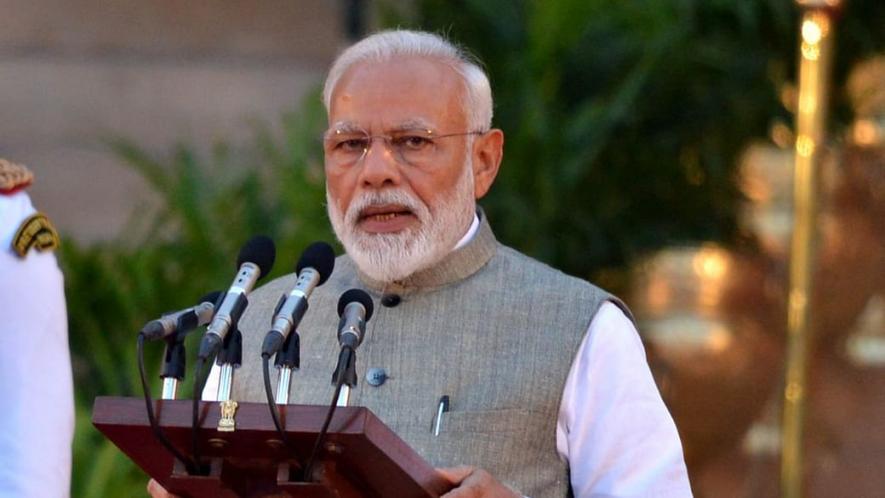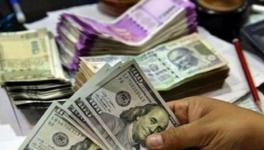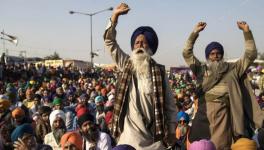Slipshod Handling of Lockdown: Panic Response of Modi Regime

It is almost four and a half months since the government on January 17 first responded publicly to the challenge posed by the novel coronavirus disease. At that time, the outbreak of COVID-19 was yet to be labelled as a pandemic. On this date, Dr. Harsh Vardhan, Union Minister of Health and Family Welfare, reviewed the government's preparedness for the first time. Besides, India began screening international travellers from China and issued Dos and Donts for Indians travelling to and from China. At that time, there were 41 confirmed cases of the virus in the world including one death from Wuhan, China on January 5.
Within days of India's first statement, the Chinese government imposed a lockdown in Wuhan and other cities in Hubei in an effort to quarantine the centre of the outbreak. India's response to this obvious evidence, that the task was indeed uphill, was typical of an over-centralised regime: from January 28, the Cabinet Secretariat (de facto an 'annexe' of Prime Minister's Office) began reviewing the situation alongside Health Ministry. Little expert viewpoint was sought at this stage.
The first effort to involve the public was not in a programme to ward off the threat but to 'celebrate' the 'heroic' return of two Air India planes carrying 647 Indian students and seven Maldivians from Wuhan. Nearly 70 Air India staff were soon handed over letters of appreciation duly signed by Prime Minister Narendra Modi and the personnel were lauded for displaying "intensive commitment". This was a preview of later 'expressions of gratitude' that PM Narendra Modi later asked people to publicly display by banging plates, ringing bells and lighting lamps or candles.
Much before the Indian government began giving the threat from COVID-19 the importance it deserved, it was evident that the Centre needed to be bifocal in its approach. There was a crisis that had to be faced in the immediate context and there was another challenge that although not being so intense, would extend for a longer period. But, as time slipped by and belatedly the Centre accepted that the threat from the virus was indeedserious, it became uni-focal as if to make up for lost time. In mid-March, the government implicitly accepted that it erred in believing that COVID-19 would spare India, while it singed China, several European countries and the United States.
Also watch: Shoddy Implementation of Lockdown a Crime Against Humanity: Arundhati Roy
In the two month period, from its first response to Modi's call for Janata Curfew on March 19,the government did no 'scenario planning'. There was no idea of the scale of medical crisis and the nature of economic calamity that would take over people's lives and cripple Indian business and supply lines. Because it did not have an all-round vision of the facets of the crisis, the Centre failed to be bifocal and became just fixated on just one objective: impose social distancing even if this meant being draconian in approach.
When Modi imposed complete nationwide lockdown from the stroke of midnight on March 24, the government had its eyes only on the tasks of 'today'. It either took no view of 'tomorrow', or its vision of this was completely blurred. Because it had done no scenario planning, the Centre completely failed in the task of balancing between two paradoxical pursuits necessary for people's safety and well-being. Although contrasting, both activities were essential to keep people safe and also ensure that the country did not slip into economic emergency. The first necessity called for physical distancing among people, minimising human-to-human contact besides, of course, reinforcing medical infrastructure and facilities.
The second necessity -- to keep the economy running -- was essential for ensuring that basic necessities of people were met during lockdown and they were not distressed by their fragile existence being jeopardised further. It was not just people's lives that was at stake in the immediate context, but there was little thought given to the long term social crisis that would be triggered by the number of businesses that would be completely wiped out due to inactivity in the period of lockdown. The government displayed no awareness of the need to find the right to balance between these mutually contradictory activities. After having done no scenario planning, the government's paradox management was woeful and it became an 'either/or' situation -- lockdown to prevent the pandemic from entering the community or no restrictions to keep the economy running.
In hindsight, it is evident that both entry into lockdown and exit from it are in essence, panic responses of a regime that did not think through its steps and estimate the impact of its dramatic order of March 24. This is not the first time that Modi had not thought through the timeline of his subsequent steps. The same shortcoming had been visible after demonetisation was announced in November 2016. As a result, the goal post was shifted numerous times from eliminating black money to digitising economy and popularising digital forms of payments and expenditure.
Instead of deciding in March in favour of 'safeguarding' health and declaring the draconian lockdown measure—which stranded millions of people who were dramatically rendered jobless and on most occasions without even the complete final wages and completely neglecting the necessity to keep the economic wheel running—the Centre should have aimed for both, controlling the pandemic while keeping the economy running, albeit sub-optimally.
Also watch: As India Starves, Modi Govt. Celebrates
India is currently witness to a phase of virtual complete 'unlocking' and this is being done sans reason and logic. Not unsurprisingly, the Centre has roped in state governments in this 'mission' because it wishes to apportion blame if 'exit' worsens the situation on the pandemic front. But even the present phase of unlocking India is being done haphazardly. If shops and establishments opening on alternate dates, serves any purpose it is ensure overcrowding, because the same number of people have to make the same purchases over a shorter period of time. Likewise, it defies logic that while people are in waiting lounges of airports, they maintain physical distance and every alternate seat is marked not to sit, but inside the aircraft all seats are occupied. One can list out many such illogical regulations and norms.
After having raised the fear of the pandemic to extraordinary levels, the government does not have the courage to say that it has decided to put its previous mission on the backseat because it is time to revive the economy. It is still an 'either/or' approach of the government. The worry is that inability to manage between these two seemingly opposite pursuits might end up in government failure on both front. While some of this is already evident with the infection rate soaring and India 'climbing' on the international chart, the Indian economy is plummeting to new lows.
The government's call for people to be self-reliant has to be seen in this light. It does not appear that jokes about this on the social media will remain so for long and instead transform into reality. In 2017, dandiya dancers during Navratras swayed to Vikas Gando Thayo Che (Vikas has gone crazy). Expect something similar soon on Atmanirbharta, already being parodied as younger brother of Vikas.
Also read: Covid-19: Hasty Lockdowns, Economic Crises and Popular PMs
The writer is a freelance journalist based in Delhi. The views are personal.
Get the latest reports & analysis with people's perspective on Protests, movements & deep analytical videos, discussions of the current affairs in your Telegram app. Subscribe to NewsClick's Telegram channel & get Real-Time updates on stories, as they get published on our website.























